Medium-sized fishes of the Gobiesociformes and Syngnathiformes orders with bizarre body shapes are interesting representatives of the Acanthopterygii superorder.
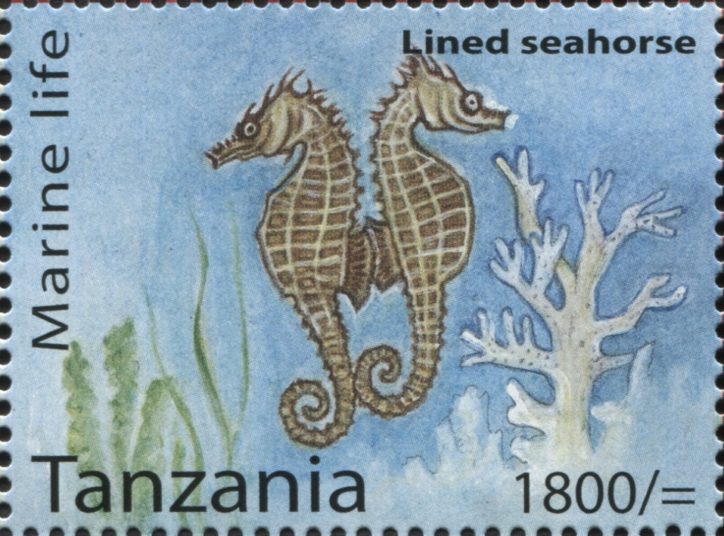
(Tanzania stamp (2014). Seahorses.)
The Gobiesociformes order comprises only one family, that is, the Gobiesocidae family. The overwhelming majority of Gobiesocidae are small (1.5 to 7 centimeters long), the largest representatives (Chorisochismus dentex and Sicyases sanguineus), inhabiting the waters near the African and South American coasts, may be up to 30 centimeters long.
Only 7 out of 170 currently described species inhabit the fresh water. The rest of them are inhabitants of the sea and ocean coastal zones. However, some representatives of the family have been found at depths down to 550 meters, and there is a high probability of discovering new deep-water species because of their small size.
Gobiesociformes mainly feed on small benthic invertebrates. They spend most of the time having stuck to stones, leaves of aquatic vegetation and other surfaces with the help of a clinging disk. Some species can go without water for several days.
6 representatives of the Gobiesociformes order are found in the Adriatic Sea:
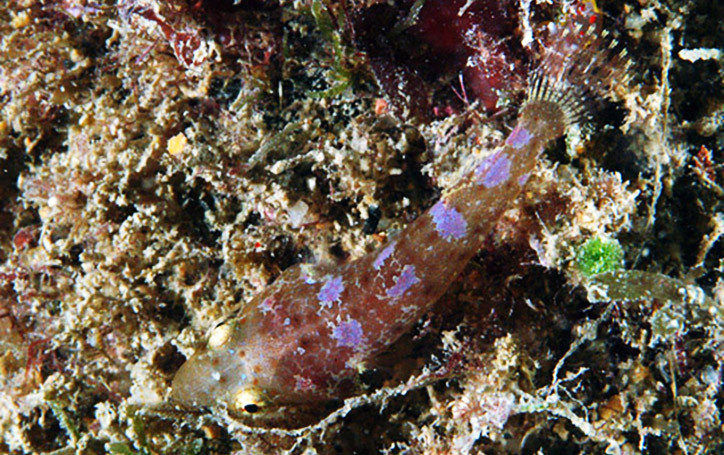
(Apletodon incognitus. Photo by © Stefano Guerrieri. colapisci.it)
It inhabits the depths of 2-19 meters, often swims next to colonies of sea urchins and meadows of sea grass, including Posidonia and Cymodocia. It hides under the stones and in the empty mussel shells. The maximum recorded length is 2.7 cm. It feeds on small benthic invertebrates. Several specimens were found in the Adriatic Sea. It is a poorly studied species, which was discovered recently.
Two–spotted clingfish (Diplecogaster bimaculata).

(Two-spotted clingfish. Photo by © Miguel Angel Rodriguez. flickr.com/photos/elmarblog)
It inhabits the depths down to 60 meters. It prefers to swim deep close to the muddy bottom, and near the rocky bottom and the shell rock in the shallows. It feeds on benthic organisms. It is a permanent inhabitant of the Adriatic Sea.
Blunt–snouted clingfish (Gouania willdenowi).

(Blunt-snouted clingfish. Photo by © Xavier Salvador. flickr.com/photos/115395428@N06)
It inhabits the shallows. The maximum recorded length is 5 cm. It feeds on benthic organisms. It is a rare inhabitant of the Adriatic Sea. It is a poorly studied species.
Connemarra clingfish (Lepadogaster candolii).
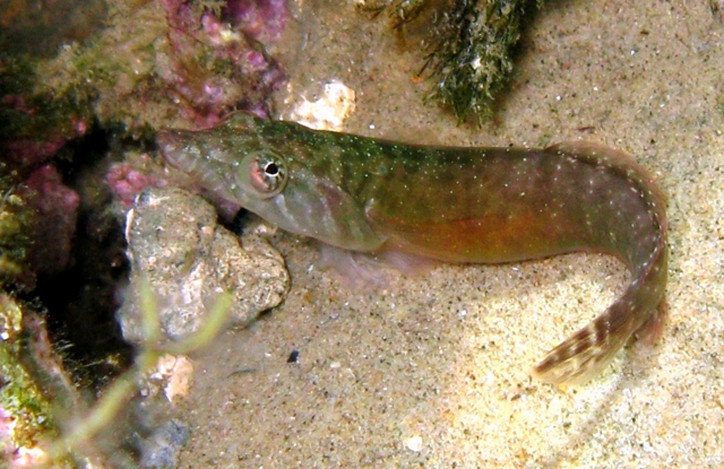
(Connemarra clingfish. Photo by © Roberto Pillon. fishbase.org)
It inhabits the tidal zone close to the algae. The maximum recorded length is 7.5 cm. It feeds on benthic organisms. It is a permanent inhabitant of the Adriatic Sea.
Shore clingfish (Lepadogaster lepadogaster).

(Shore clingfish. Photo by © Andy Rapson. glaucus.org.uk)
It inhabits the tidal zone. The maximum recorded length is 6.5 cm. It feeds on benthic organisms. It is a permanent inhabitant of the Adriatic Sea.
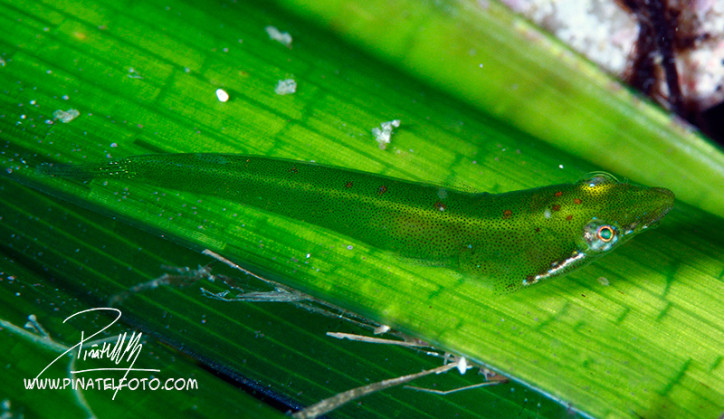
(Opeatogenys gracilis. Photo by © Jose Martín Piñatel. flickr.com/photos/pinatel)
It is often found in the fields of laminaria, having stuck to the leaves. The maximum recorded length is 3 cm. It feeds on near-bottom organisms. It is a rare inhabitant of the Adriatic Sea.
The Syngnathiformes order is represented in the Adriatic Sea by the species of the Centriscidae, Fistulariidae and Syngnathidae families.
Centriscidae is a small family of sea fish that comprises about ten species. Centriscidae have a flat body and an elongated head with a tiny mouth. One representative of the family is found in the Adriatic.
Longspine snipefish (Macroramphosus scolopax).

(Longspine snipefish. Photo by © AcquarioVillage. flickr.com/photos/acquariovillage)
It inhabits the depth of 25-600 meters, usually 50-350 meters. It is a schooling fish, which prefers to swim near the sandy bottom. The maximum recorded length is 20 cm, specimens up to 12 cm long are more common. It feeds on benthic invertebrates. It is a permanent rare inhabitant of the Adriatic Sea.
The Fistulariidae family comprises 4 species. Fistulariidae inhabit all tropical and subtropical sea waters, one representative inhabits the Mediterranean Sea. These fish can be up to two meters long. They are similar to many eels in body shape, but their peculiar features are a very elongated head, well-marked dorsal, anal and bifurcated tail fins.
Bluespotted cornetfish (Fistularia commersonii).

(Bluespotted cornetfish. Photo by © Derek Keats. flickr.com/photos/dkeats)
It inhabits the depths down to 132 meters. Adult specimens prefer to swim close to the sandy bottom near rocky reefs, often arranging schools. The maximum recorded length is 160 cm, specimens up to 100 cm long are more often found. It feeds on small fishes, shrimps and squids. This species appeared in the Adriatic recently. It swam into the Mediterranean Sea through the Suez Canal. A few specimens have been found in the Adriatic so far.
The Syngnathidae family comprises two subfamilies, including Hippocampinae and Syngnathinae.
Hippocampinae are small fish, the size of which ranges from 2 to 30 centimeters. They are found in shallow tropical sea waters around the world. They have a sedentary lifestyle. Usually they cling to plants with their tails. They change the body color, melting into the background.
The subfamily includes about 45 species. Two of them are found in the Adriatic Sea.
Long–snouted seahorse (Hippocampus guttulatus).

(Long-snouted seahorse. Photo © zeepaardjes.com)
It inhabits the depths of 1-20 meters. The maximum recorded length is 21.5 cm. It has a sedentary lifestyle. It feeds on small crustaceans and shrimps. It is a permanent inhabitant of the Adriatic Sea, more common in its northern part.
Short–snouted seahorse (Hippocampus hippocampus).

(Short-snouted seahorse. Photo by © Stavros Markopoulos. flickr.com/photos/markop)
It inhabits the depths down to 60 meters. It prefers to swim near the soft bottom among the rocks and algae, imitating green and yellow plants. The maximum recorded length is 15 cm. It feeds on small organisms. It is a permanent rare inhabitant of the Adriatic Sea.
Syngnathinae is a subfamily that comprises more than 240 species, the size of which ranges from 2.5 to 60 centimeters, the majority of representatives are up to 35-40 centimeters long. They mostly inhabit the coastal zone, feeding on small plankton crustaceans. 8 species of the subfamily are found in the Adriatic Sea.
Spotted pipefish (Nerophis maculatus).
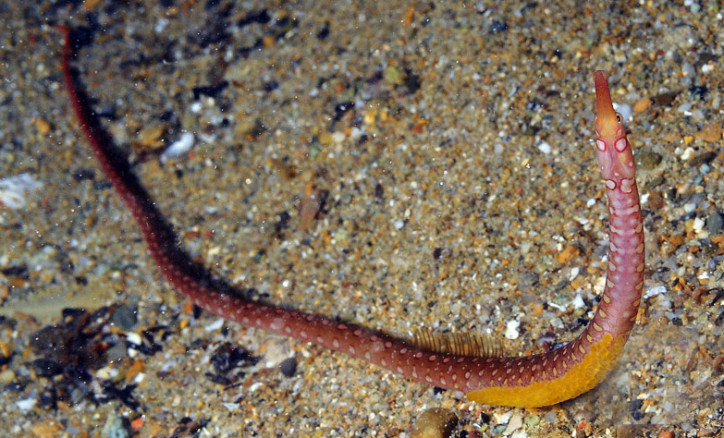
(Spotted pipefish. Photo by © Stefano Guerrieri. naturamediterraneo.com)
It inhabits the coastal zone near the bottom. The maximum recorded length is 30 cm. It feeds on zooplankton and small crustaceans. It is a permanent inhabitant of the Adriatic Sea. It is a rare species.
Straightnose pipefish (Nerophis ophidion).

(Straightnose pipefish. Photo by © Lauri Urho. luontoportti.com)
It inhabits kelp forests at the depths of 2-15 meters. The maximum recorded length is 30 cm. It feeds on small crustaceans and fish fry. It is a permanent rare inhabitant of the Adriatic Sea.
Black–striped pipefish (Syngnathus abaster).
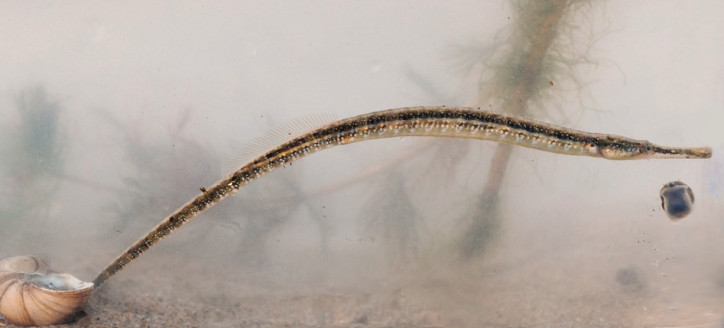
(Black-striped pipefish. Photo by © Sergey Yeliseev. flickr.com/photos/yeliseev)
It inhabits the depths down to 5 meters. It prefers to swim close to the sandy and muddy bottom covered with algae. The maximum recorded length is 21 cm. It feeds on small crustaceans and fish fry. It is a permanent inhabitant of the Adriatic Sea. It often enters the rivers flowing into the sea.
Greater pipefish (Syngnathus acus).
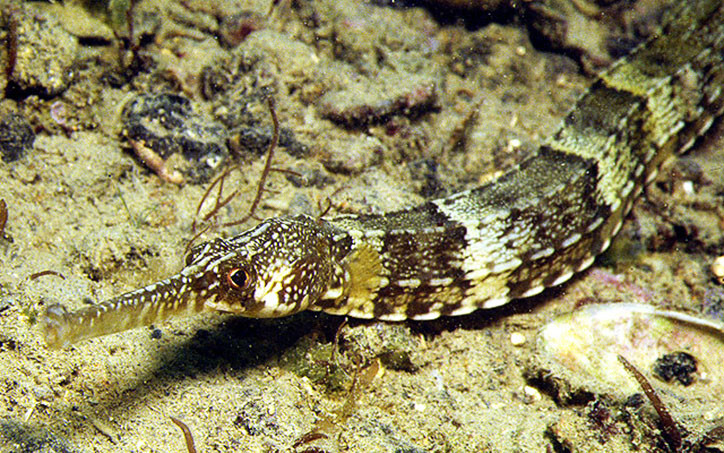
(Greater pipefish. Photo by © Robert A. Patzner. fishbase.org)
It inhabits the depths down to 110 meters, usually 3-12 meters. It prefers to swim close to the sandy and muddy bottom in the fields of the eelgrass and algae near the coast, often near the river mouths. The maximum recorded length is 50 cm; specimens up to 30 cm are more common. It feeds mainly on small crustaceans. It is a permanent inhabitant of the Adriatic Sea.
Pelagic pipefish (Syngnathus phlegon).
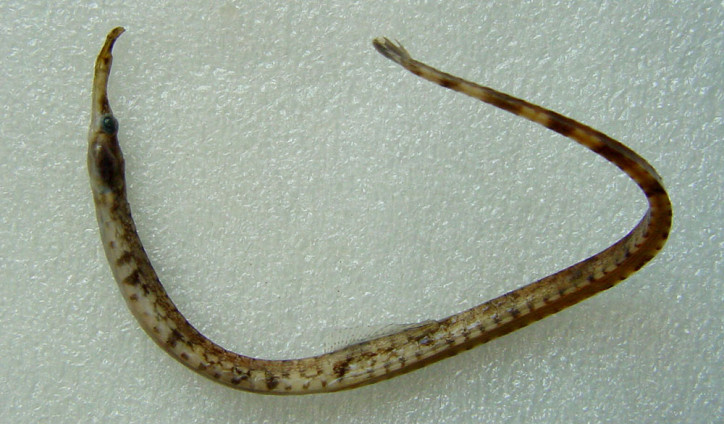
(Pelagic pipefish. Photo by © Levent Artüz. fishbase.org)
It can be sometimes found at depths down to 200 meters. The maximum recorded length is 20 cm. It feeds on zooplankton and small invertebrates. It is a permanent rare inhabitant of the Adriatic Sea.
Darkflank pipefish (Syngnathus taenionotus).

It inhabits the coastal areas of the sea in the vegetation above the muddy bottom. The maximum recorded length is 19 cm. It feeds on small organisms. It is a permanent inhabitant of the Adriatic Sea. It is a rare species. It may be the endemic of the Adriatic.
Narrow–snouted pipefish (Syngnathus tenuirostris).

(Narrow-snouted pipefish. Photo © colapisci.it)
It inhabits the kelp forests in the shallow areas of the sea close to the sandy bottom. The maximum recorded length is 39 cm. It feeds on small invertebrates and fish fry. It is a permanent rare inhabitant of the Adriatic Sea.
Broadnosed pipefish (Syngnathus typhle).
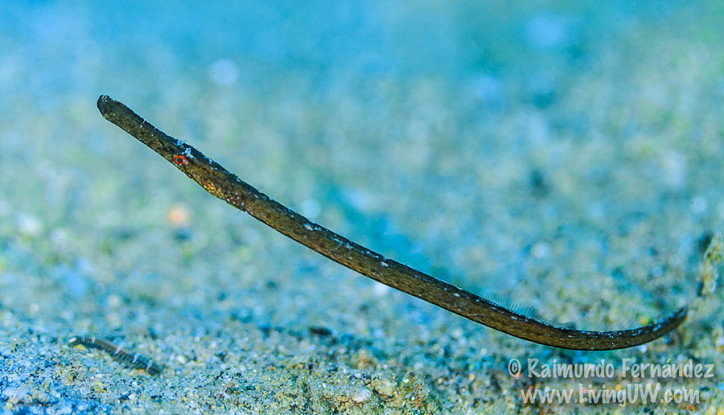
(Broadnosed pipefish. Photo by © Raimundo Fernandez. flickr.com/photos/rferdiez)
It inhabits the depth of 1-20 meters and prefers to swim in the coastal zone and river mouths. The maximum recorded length is 35 cm. It feeds on small organisms and fish fry. It is a permanent inhabitant of the Adriatic Sea.